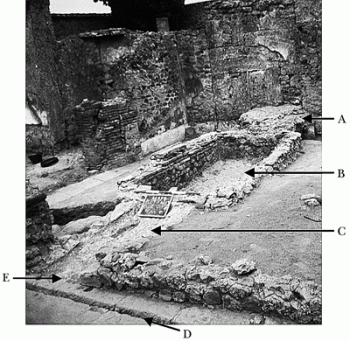American Journal of Archaeology | The Journal of the Archaeological Institute of America
You are here
Water, Wealth, and Social Status at Pompeii: The House of the Vestals in the First Century A.D.
October 2005 (109.4)
Water, Wealth, and Social Status at Pompeii: The House of the Vestals in the First Century A.D.
The use of water in Roman private houses has been identified as a highly visible status symbol. The detailed study of the House of the Vestals at Pompeii reveals how water features were central to the houseís structural changes from the late first century B.C. The owners of the house invested heavily in fountains and pools as key elements in the display of their wealth to visitors and passers-by alike. This article relates the structural development of the House of the Vestals to the social history of decorative water usage, from an initial investment exploiting the pressurized water provided by the new aqueduct early in the Augustan period to the responses to crises following the earthquake of A.D. 62.
Water, Wealth, and Social Status at Pompeii: The House of the Vestals in the First Century A.D.
By Rick Jones and Damian Robinson
American Journal of Archaeology Vol. 109, No. 4 (October 2005), pp. 695–710
DOI: 10.3764/aja.109.4.695
© 2005 Archaeological Institute of America


